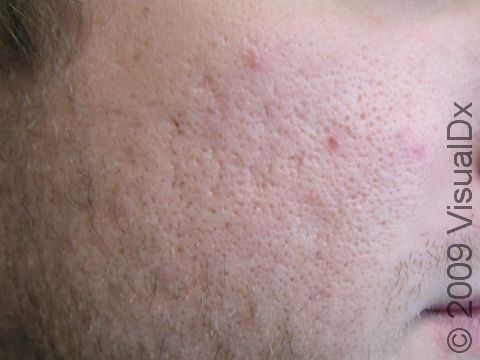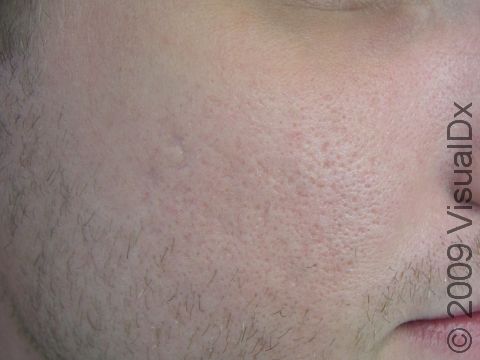Skin Renewal, Laser
Laser skin renewal, also called laser skin resurfacing, has come a long way in a relatively short amount of time. Laser treatments can now be used to help many age-, sun-, and acne-related skin concerns and help resolve the appearance of fine lines and wrinkles, crow’s feet, sun spots, uneven pigmentation and skin texture, acne scars and other types of scars, burns, mildly sagging skin, large pores, and others. Many of the treatments that were once only safe for lighter skin colors are now safe and effective in darker skin colors with relatively few risks and side effects.
Laser therapy technology is generally categorized as either:
- Ablative with total skin resurfacing – The top layers of skin are removed. This type of resurfacing is typically used for more severe aging symptoms such as deeper wrinkles and lines as well as deeper acne scars. This is the more invasive type of skin renewal, requiring longer downtime, but it offers fairly dramatic results in a single treatment session.
- Nonablative laser resurfacing – Lasers work by heating underlying skin to initiate collagen production without altering the skin’s surface. This type of resurfacing is minimally invasive and is typically used for improving the appearance of fine lines, mild wrinkling, minor acne scarring, and milder instances of uneven skin tone and texture. Recovery time is shorter than with ablative lasers but usually requires multiple treatment sessions (usually 4-6).
In general, people who undergo laser therapy are happy with the results. Consulting with a board-certified dermatologist or plastic surgeon is crucial so they can assess your suitability for laser resurfacing. During this consultation, they will evaluate your skin type to select the most suitable and safest laser device for your needs. They will also assess your current skin condition and help provide realistic expectations for the treatment.
Laser treatment plans should be tailored based on your skin concerns and desired outcomes. Different types of lasers and intensities may be recommended depending on the severity of your skin issues.
Pretreatment Preparation
Before your laser treatment:
- Avoid sun exposure.
- Avoid skin exfoliation one week prior to treatment.
- Temporarily discontinue retinoids creams, glycolic acid, salicylic acid. or lactic acid treatments in your skin-care routine.
- Avoid skin-care products that may cause skin irritation.
- Avoid alcohol and smoking.
- Discontinue isotretinoin (eg, Accutane) for 6 months to 1 year prior to laser treatment.
What to Expect During Your Visit
What a session is like depends on the technology used. However, general steps are as follows:
- The area to be treated is cleaned and potentially marked up. In the case of nonablative lasers, a local anesthetic is applied to numb the skin. In the case of ablative lasers, you may be given general anesthesia.
- The laser is moved across the target area.
- After the procedure, a thick ointment and/or dressing may be applied to the treated area.
What to Expect After Your Visit
After laser skin renewal, the skin will often be red or darker than the surrounding skin, swollen, and painful or tender. Following ablative laser skin renewal, the new skin will start to heal within a couple weeks but will take at least a month to fully heal.
Nonablative laser skin renewal takes less time. Your skin will likely be sore, swollen, and red or darker than the surrounding skin for a few hours or days.
Follow-Up Care
Ablative laser total skin resurfacing requires 7-14 days of intense skin care, and you will likely be unable to work or socialize during that time. A typical regimen is a combination of skin dressings, laser gels to keep the skin moist, ointments, and diluted vinegar compresses applied around the clock. Antibiotic and antiviral pills are usually taken for 7-10 days. After 7-14 days, a moisturizing sunblock should be used for several months. Avoid applying products that contain lanolin (eg, Aquaphor) because it may trigger a sensitivity.
Nonablative fractional laser treatment has less downtime. Typically, cold compresses should be used as needed. It is important to use sunblock daily. Swelling may be improved by elevating the head at nighttime.
The sunblock used following any type of laser resurfacing should be a broad-spectrum one (meaning it protects against UVA and UVB rays) of SPF 30 or higher. Also use a gentle cleanser and moisturizer in your skin-care routine.
Risks and Potential Side Effects
Risks and side effects are decreased when laser skin renewal is performed by a board-certified dermatologist.
The range of potential side effects is listed below.
Ablative and nonablative risks include:
- Temporary or longer-term skin color changes such as redness or areas that are darker than the surrounding skin.
- Swelling.
- Acne flares or flaring of cold sores.
- Blistering.
- Infection.
- Scaring.
Side effects associated with ablative laser are more severe and may also include:
- Oozing.
- Crusting.
- Long-lasting sensitive skin.
When to Seek Medical Care
See your medical professional for any follow-up care or additional treatments.
Contact your medical professional if you have signs of infection (such as pain, spreading redness, or fever) following laser skin renewal.
References
American Academy of Dermatology Association. Skin conditions that lasers can treat. AAD. https://www.aad.org/public/diseases/a-z/skin-conditions-lasers-treat. Updated 2021 Aug 31.
McIlwee BE, Alster TS. Laser skin resurfacing: Cosmetic and medical applications. In: Kang S, Amagai M, Bruckner AL, Enk AH, Margolis DJ, McMichael AJ, Orringer JS, eds. Fitzpatrick’s Dermatology. 9th ed. New York, NY: McGraw-Hill Education; 2019.
Z. Handler M, J. Goldberg D. Laser resurfacing. In: Kantor J. Dermatologic Surgery. McGraw-Hill Education; 2018.
Last modified on June 25th, 2024 at 12:24 pm

Not sure what to look for?
Try our new Rash and Skin Condition Finder

